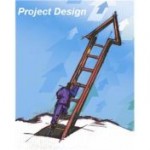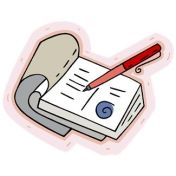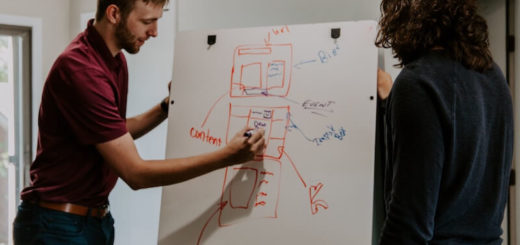Project Design Template: A 9-Step Approach to Designing a Project
 Designing a project is a process that aims to generate sustainable ideas for project development and create an action plan for successful realization of those ideas. It is a challenging task that requires project managers to take steps for defining their projects and developing an implementation strategy. In this Project Design Template we explain how to design a project in 9 steps. The proposed approach in this template is generic and applicable to most types of project.
Designing a project is a process that aims to generate sustainable ideas for project development and create an action plan for successful realization of those ideas. It is a challenging task that requires project managers to take steps for defining their projects and developing an implementation strategy. In this Project Design Template we explain how to design a project in 9 steps. The proposed approach in this template is generic and applicable to most types of project.
In this Project Design Template the following 9 steps are described:
- State the Vision
- Identify the Problem
- Assess Resources
- Establish Project Goals
- Select a Project Strategy
- Plan for Contingency
- Design an Evaluation Plan
- Budgeting
- Write the Proposal
Step #1. State the Vision
First you create a vision statement for your future project. This means you must envision the perfect environment in which existing problems and needs are resolved. Your focus should be placed on an idealistic view of the outcome that is expected to receive upon successful project completion. You must try to visualize the project outcome and create a big-picture view of the situation that will be caused by the project.
A vision statement is a formal document that describes the desired future state of current operating environment. The purpose of writing a vision statement is to present a project to potential investors or sponsors and to explain them that the project design idea is worthwhile. A good vision statement demonstrates the benefits which will be received after project accomplishment.
The vision statement document is quite short and never includes too many explanations and descriptions. It just highlights a general idea of what is desired for achieving. It explains the future state of an operating environment in 1-2 sentences. Verbs are used to focus the reader on action.
Here’s an example:
- Create an operating environment in which our company is enabled to carry out the business processes with higher efficiency and to manage process performance.
- Provide the organization with a project management system that meets the needs and expectations for managing business projects under the corporate strategy and policies. We plan that a new system will ensure effective project management in all divisions of the organization.
Sometimes project vision includes a wider description of the project design idea. There may be itemized lists with general explanations and recommendations about how to implement the idea.
Step #2. Identify the Problem
A good project is always designed in a way that ensures right understanding of the stated vision and identifies the problems that prevent from achievement of the vision. Thus, you need to perform a needs assessment to figure out what problems your business environment encounters and what needs your project will address. The assessment will help you ensure that the problems do not block success of the envisioned scenario. The assessment will also help gather valued information about the problems and let you better understand possible design of project solutions.
A needs assessment is best presented as a process that carries out several steps, such as:
- Identify Types of Information. First, you decide what information is required for gathering. For example: if you run a website development project, you need such information as design, audience, SEO preferences, content requirements, others. If you design a software project, you may require such info as functions, features, user requirements, target audience, dev platform, etc.
- Find Sources of Information. Now you must identify any sources available for gathering the needed information. Obviously you’ll need to select only those sources that provide correct and relevant data. For example: for your website project, you communicate with the customer, visit online dedicated forums, discuss SEO tricks, etc. For your software project, you must discuss the proposed project design template with end users, developers, testers, etc.
- Select Means of Gathering. Effective project design management requires you to know how to gather the necessary information. You must select and use right means of data gathering. Surveys, questionnaires, phone calls, meetings, interviews, feedback forms, brainstorming are a few examples.
By analyzing and assessing the needs you will identify what problems your project will address. The needs assessment results in creating a problem statement document that explains what needs and problems to solve by the proposed project concept.
Step 3. Assess Resources
This step of the project design template requires you to figure out what resources will be needed to reach the vision and address the problems of your project. Labor, equipment, funds, supplies, materials, facility needs are examples of project resources.
There are many methods of resource assessment. The simplest one is to use the method of 5W questions, which is described below.
- Who will perform the project? Identify the number and type of human resource required to do your project
- What tools will be used? Define supplies, equipment, and materials required for the project
- Where will the project be performed? Select location and facilities
- When is the project started and finished? Estimate the time frame required for successful implementation of your project design template
- Why is the project launched? Identify the reason(s) why you need to involve the necessary resources in your project
Step #4. Establish Project Goals
A project goal is an observable and measurable result that is planned to receive upon successful implementation of the project. Goals are based on problems. If you have a problem, then the goals of your project should address this problem.
You need to develop a goal statement that explains what exactly you wish to reach by your project. SMART is one of the best methods for setting goals. SMART means a goal should be specific, measurable, achievable, realistic and time-scaled. Your goal statement should address the problems and maintain the vision.
Step #5. Select a Project Strategy
A strategy or approach to project design management explains how to perform stated goals with available resources. Such a strategy will be the basis for developing project activities and tasks.
A project strategy should be focused on realizing the vision and resolving problems and needs through accomplishing project goals and with consumption of available resources. Here’re several tips on how to select a strategy for your project design template:
- First consider using your past experience with similar projects
- Review lessons learned from those projects
- Use best practices of project management that can be applied to your specific project
- Consider resolution of the problems and needs as the primary goal of your future strategy
- Build your strategy incrementally to establish a clear path for achieving the goal
- Use work decomposition as the way to design project phases, activities, steps, tasks of your strategy
Step #6. Plan for Contingency
Contingency planning helps you ensure success of your project in the long run. You’ll need to design a project risk management approach that forecasts future events (threats and uncertainties) and provides a corrective action plan for responding to identified risks.
All risks that have a negative impact on a project can be grouped by these general categories:
- Personnel: turnover, lack of skills & expertise, travels
- Schedule: late start, delays
- Scope: incorrect boundaries, poorly defined requirements
- Cost: underestimated costs, lack of funds
- Stakeholders: lack of community support, poor involvement
Step #7. Design an evaluation plan
Having an evaluation plan will help you figure out whether your project moves towards the right direction. You must use such indicators as Impacts and Outcomes to evaluate your project. Pleas ready this article to find out more about project evaluation.
Step #8. Budgeting
Generally speaking, budgeting means placing quantified resource requirements (amount of capital, amount of supplies, number of human resources) on a project timeline. Through budgeting you create a budget sheet for your project and confirm what available resources are required to reach the project goals. Read this article “Budget and Financial Resources” to learn more.
Step #9. Propose the Project
The final step of this project design template is to develop a proposal document that explains why start the project and what benefits are expected. You must summarize all the work done and develop a proposal of your project. Here’re some tips:
- Write your vision about the future of current environment
- Add a brief description of the problem/need that exists in the environment
- State the goals of your project
- Outline the strategy you’re going to use for project implementation
- Explain what types and amount of resources are required
- Describe the results of your risk analysis and explain how you’re going to manage contingency
- Write about your project evaluation criteria
- Present an outline of the budget
The proposal document is to be submitted to senior stakeholders for review and signing. If the document is approved and signed, then your project proceeds to the next stage – Planning.















